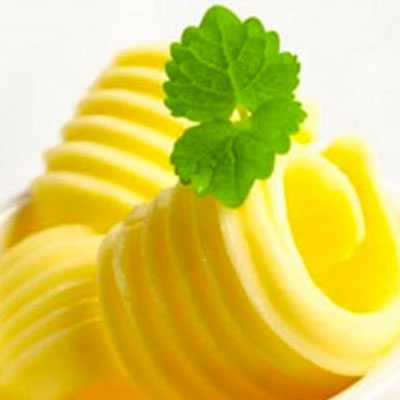Origins of Papara
Papara has its roots in the rural kitchens of Turkey, where resourcefulness and creativity are integral to daily cooking. This dish emerged as a way to use up stale bread, a staple ingredient in Turkish households. Rather than wasting leftover bread, it was repurposed into a hearty meal by combining it with simple yet flavorful ingredients readily available in most homes, such as tomatoes, butter, and spices. Papara exemplifies the Turkish culinary tradition of turning humble ingredients into deeply satisfying comfort food.
A Reflection of Turkish Hospitality
In Turkish culture, food is more than sustenance—it’s a way of bringing people together. Papara reflects this spirit of sharing and generosity. Whether served as a quick family meal or a dish to welcome guests, its warm, hearty flavors embody the hospitality for which Turkish cuisine is renowned. Over the years, variations of Papara have developed, with some adding meat, yogurt sauces, or regional spices to reflect the diverse flavors of Turkey’s regions.
A Dish for Modern Kitchens
Today, Papara remains a beloved dish, not only for its nostalgic ties to traditional Turkish cooking but also for its practicality and adaptability. In an era when reducing food waste is more important than ever, this recipe serves as a reminder of how simple, everyday ingredients can be transformed into something delicious. Its ease of preparation and comforting flavors make it a favorite for weeknight dinners, especially when you need a meal that’s quick yet deeply satisfying.
Papara is more than just a dish—it’s a celebration of Turkish culinary ingenuity and the timeless joy of sharing good food with loved ones.
What Type Of Bread Works Best For Making Papara?
The best type of bread for making Papara is stale, crusty bread with a firm texture. Day-old bread works particularly well because it holds its shape when combined with the tomato sauce, preventing the dish from becoming too mushy. Here are a few ideal options:
1. Traditional Turkish Bread (Pide or Ekmek)
- Turkish pide or ekmek is commonly used for Papara due to its soft interior and slightly chewy crust. It absorbs the sauce beautifully without falling apart.
2. Sourdough Bread
- Sourdough bread's firm texture and tangy flavor make it a great substitute, adding an extra depth of taste to the dish.
3. Baguette or Rustic Artisan Bread
- A baguette or similar rustic loaf with a sturdy crust and airy crumb is also a good choice. Its structure allows it to soak up the sauce while maintaining its integrity.
4. Avoid Soft, Pre-Sliced Bread
- Sandwich bread or other soft, pre-sliced varieties are not recommended as they tend to disintegrate and become overly soggy when mixed with the sauce.
By choosing a robust, stale bread, you'll achieve the perfect balance of texture and flavor, making your Papara rich and satisfying.
Can I Add Meat To This Recipe, And If So, What Kind Works Best?
You can absolutely add meat to Papara to make it heartier and more filling! Meat enhances the dish with additional flavor and protein, making it a versatile option for meat lovers. Here are some of the best meat choices to include in Papara:
1. Ground Beef or Lamb
Why It Works: Ground beef or lamb is a traditional addition to Papara in some Turkish households. The meat is typically browned with onions, garlic, and spices like cumin and paprika before being mixed with the tomato sauce.
Tip: Cook the ground meat separately, then combine it with the tomato sauce before mixing with the bread.
2. Shredded Chicken
Why It Works: Shredded cooked chicken adds a leaner protein option to Papara while maintaining the dish’s comforting flavors. Rotisserie chicken works especially well for convenience.
Tip: Stir the shredded chicken into the tomato sauce during the final simmer to ensure it absorbs the flavors.
3. Turkish Sucuk (Spiced Sausage)
Why It Works: Sucuk, a spiced Turkish sausage, brings a bold, smoky flavor to the dish. Slice it thinly and sauté it before adding it to the tomato sauce for an authentic twist.
Tip: Adjust the spices in the sauce if using sucuk, as it already contains strong seasonings.
4. Meatballs
Why It Works: Adding small meatballs made from ground beef or lamb can transform Papara into a festive and filling meal.
Tip: Fry or bake the meatballs before simmering them in the sauce to retain their shape.
Adding meat to Papara not only makes it more substantial but also allows for endless customization based on your taste preferences. Whether you opt for ground meat, shredded chicken, or Turkish sausage, the result will be a delicious, hearty dish perfect for any occasion.
How To Store Papara Turkish Bread?
Proper storage ensures that your Papara remains flavorful and safe to eat as leftovers. Since Papara combines bread and a rich tomato sauce, it’s best enjoyed fresh, but you can store it for a short time if needed. Here’s how to store and reheat it effectively:
1. Refrigerating Papara
Cool Completely: Allow the Papara to cool to room temperature before storing. This prevents condensation, which can make the bread overly soggy.
Use Airtight Containers: Transfer the Papara into an airtight container to preserve its freshness and prevent it from absorbing other odors in the fridge.
Storage Duration: Refrigerated Papara can be stored for up to 2 days. Beyond that, the texture of the bread may deteriorate.
2. Freezing Papara
Not Ideal for Freezing: Due to the bread’s tendency to become mushy when thawed, freezing Papara is generally not recommended. If you wish to freeze components, freeze the tomato sauce separately and add fresh bread when reheating.
3. Reheating Papara
Oven Method: Preheat your oven to 350 °F (175 °C). Place the Papara in an oven-safe dish, cover it with foil, and heat for 10-12 minutes, or until warmed through.
Stovetop Method: Heat in a skillet over medium heat with a small splash of water or broth to restore moisture, stirring gently until warmed.
Microwave Method: Place a portion in a microwave-safe dish, cover with a microwave-safe lid or damp paper towel, and heat on medium power for 1-2 minutes.
Pro Tips:
- To avoid sogginess, store the bread and sauce separately if preparing Papara in advance. Combine and reheat when ready to serve.
- Add a small drizzle of fresh olive oil or a dollop of yogurt after reheating to enhance the flavors.
- By following these steps, you can enjoy the rich and comforting flavors of Papara even after storing it!










































